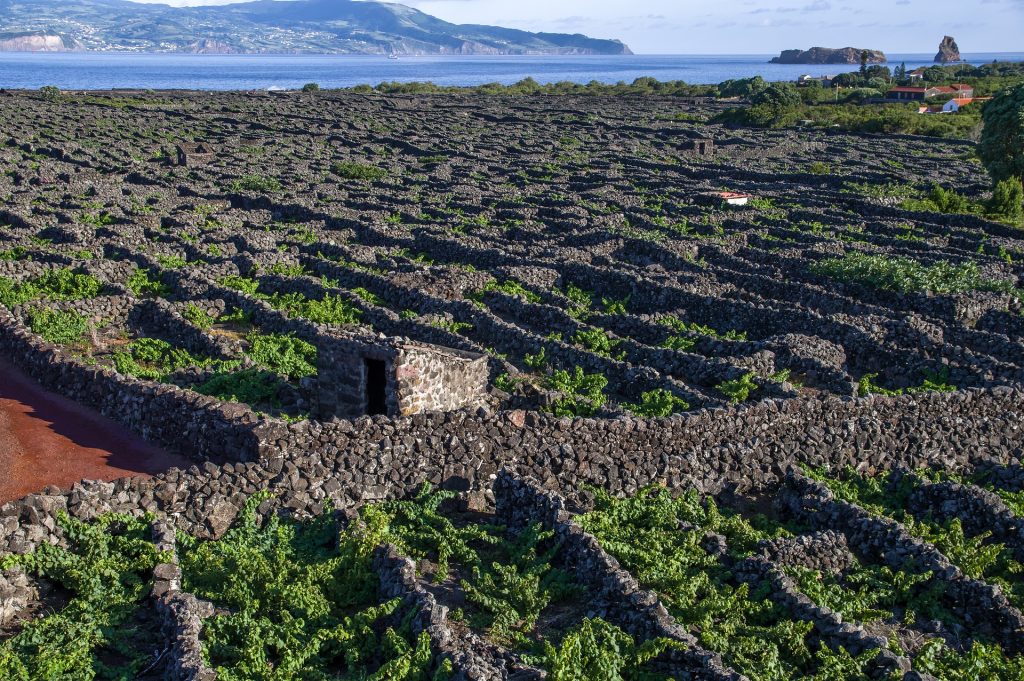We have a really tenuous link between our video and today’s destination. First enjoy the video and then we’ll explain the link. The title of today’s post is taken from the second line of the song.
Many of you will be aware that Canadian born Nelly Furtado is of Portuguese ancestry and has from time to time sung in Portuguese. In fact Nelly’s parents were born on Sao Miguel Island which are part of the Portuguese Azores.
The Azores are a group of volcanic islands in the Atlantic Ocean, almost equidistant from Portugal and Morocco. Another 500kms to the north west would take you to Newfoundland, Canada.
There are nine major islands in three main clusters, each one is distinct due to the fact that these remote islands were gradually inhabited over two centuries. Sao Miguel Island is one of the easterly islands. Alternatively known as the “Green Island”, Sao Miguel Island is the most populated of the islands and the location of the islands largest city, Ponta Delgado. The low buildings that dominate the city are mainly built of local volcanic stone which contrasts with the traditional Portuguese facades.

The island’s main attractions are not man-made but its natural landscapes. The most famous of these it the Sete Cidades, a forested caldera with twin lakes at the bottom, one green and one blue. The tour round the outside of the caldera is fairly flat whilst in contrast the drive to the rim is up, narrow uneven dirt roads.

There are a number of local legends associated with the formation of the Lagoa das Sete Cidades (Lagoon of the Seven Cities), the green and blue lagoons are very distinctive.
Moving on from Sao Miguel Island, further to the west is the “Blue Island” of Faial. The name comes from many hydrangea bushes they flourish on the island as the result of being introduced by Flemish settlers many years ago. You can visit Faial as a day trip from nearby Pico or stay overnight. The highlight of the island is Capelinhos, which erupted in 1957. The closest village to the volcano was covered in ash and pumice and you can vist the half buried lighthouse which today houses the Capelinhos Volcano Interpretation Centre.

Pico is known as the “Grey Island”. A look at the landscape and the volcanic rock explains why. Its landscape was designated as a UNESCO World Heritage Site in 2004. It was neither the Portuguese nor the Flemish who had most influence of the destiny of this island, but Sicilian monks who brought their knowledge of grape husbandry to the island. They used the volcanic stone to great effect as can be seen below. The stone walls protect the vines from the Atlantic winds and the stone absord heat during the day and keep the vines warm at night.

Moving on again we come to the “Brown Island” of São Jorge. Again this island can be visited on a day trip from Pico. The brown is from the colour of the cliffs and looking at the cliffs you can make out the outline of a dragon’s spiney back, hence the island is named after São Jorge the dragon slayer. Can you spot the dragon in the image below?

The main reason to visit the island is for the cheese as cows outnumber the local population by 2 to 1. The spicy cheese produced on the island is gaining a following around the world.
This leads us on to our final island of the day, the “Purple Island” of Terceira, famous for the colour of the sunsets seen from the island. The city of Angra do Heroísmo is the oldest on any of the its and with its narrow cobblestone streets, whitewashed buildings and terracotta-tiled roofs gained it a UNESCO World Heritage Site desination.

Bulls play a very important part in the culture of the island. When the Spanish tried the invade the island, the locals forced their cattle to stampede the Spanish invaders as they tried to come ashore. Since the 16th century, the “touradas a corda” are held in the summer months. A bull is let loose with a very long rope around its neck. The other end of the rope are held by eight men who control the bull at length. People then attempt to get as close as they dare to the bull.
Getting back to the title of the post. We think that once you are in the Azores you will get the feeling that you were glad you came.
Contact Maggie today to book your break to the Azores.
Pay with the card that gives you complimentary access to over 1,200 airport lounges across more than 130 countries worldwide as standard plus reward points – The American Express Platinum Card*.
Any links with an * by them are affiliated, which means get a product via this link and a contribution may be made to us.